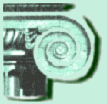
|

Abstracts in English - Tietolinja 1/2004 |
Standards - for the common goodThe launching of the new information retrieval portal and the digital object management system, which together with the existing library system form a closely knit 'triangle' in Finland, have created new demands for the development of standards in the information field. Information retrieval portals require several different protocol and format definitions and these are being built in the NISO Metaserch Initiative project. In Finland standardisation in this field is led by the Committee for Information and Documentation set up by SFS - the Finnish Standards Association. This organ has now taken a more active role in preparing the standards required by the 'triangle' projects. In this article the author discusses Metadata formats, Information retrieval protocols and Identifiers. For further information, please, contact:
TEL - The European LibraryThe European National Libraries are building a new service that will expand the scope of the old Gabriel (Gateway to Europe´s National Libraries) to information retrieval and access to digitised materials. The new service is called TEL : The European Library. TEL was originally an E.U. project that was completed in January 2004. Now the project is evolving into a pan-European service that will provide access to the databases, digitised materials and other collections of the National Libraries. The new service will be launched in the beginning of the year 2005. For more information, please see the portal website at
Gabriel/TEL User SurveyThe report is available in English on the Gabriel webiste at
Universal Borrowing in FinlandThe Voyager library system provides the Finnish Linnea2 libraries a new tool for universal borrowing. This feature has been tested by the National Repository Library together with the university libraries in Kuopio, Oulu and Vaasa. In Kuopio this is done as a part of the ordinary lending process whereas in Oulu the loans still go via the Interlibrary Loan Department. Both models have proved successful. There has been a few problems with interoperability between different versions of the library system software, but otherwise all the experiences have been very encouraging. For further information, please, contact:
Shibboleth - a bloody legend and a modern authentication systemShibboleth, a project of Internet2/MACE, is developing architectures, policy structures, practical technologies, and an open source implementation to support inter-institutional sharing of web resources subject to access controls. It enables the patron to access all services provided by his home organisation with one log-in procedure. Similar services are being developed round the world. Local examples include the Spanish Papi and the Norwegian FEIDE. Shibboleth has been pilot tested in 33 organisations in the U.S., 6 in Switzerland as well as a few in Finland. A Shibboleth development project has also been launched in the U.K. The National Library of Finland together with CSC, the Finnish IT center for Science, have started a co-project for installing Shibboleth into the Nelli Information Retrieval Portal. The aim is to go live with Shibbolet during 2004. The 'shibbolling' of Nelli is implemented by CSC. For further information, please, contact:
Open Access publishing expandingIn 1991 the Hungarian born professor Stevan Harnad described the stages of scientific publishing as four revolutions. According to him the first one was speech, the second one writing and the third one printing. The fourth revolution was communicating by e-mail, the possibility for open peer review and the possibility to make links direct from the text to the sources. However, it was not until the expansion of the World Wide Web that the scientific publishers became seriously interested in electronic publishing. Since then it has really been a unique success story. In the academic world getting content for the WWW-service has never been a problem. The high prices of these materials, on the other hand, have caused scientists and librarians alike to seek for alternatives. In the past few years Open Access publishing has been constantly increasing. This article discusses both the channels and techniques of this new service form. For further information, please, contact:
|
|
|
|